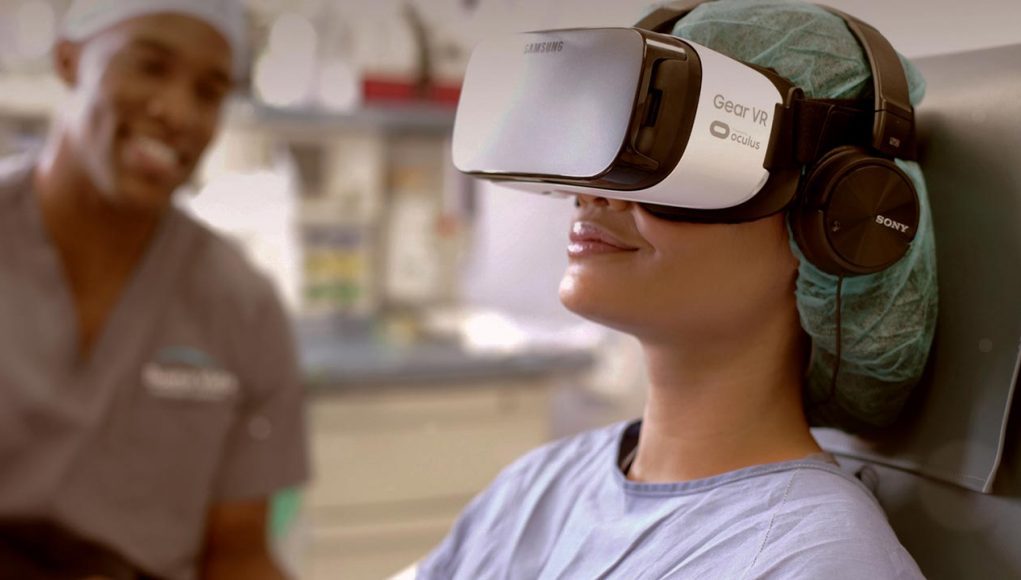 There’s been more than 30 years of research into the medical applications of virtual reality, but it’s not until the recent consumer VR revolution that the technology has been cost-effective enough to use. The research shows that the combination of immersion with interactivity can help to reduce pain up to 70%, and in some studies do as well or better as using morphine. AppliedVR was spun out of Lieberman Research Worldwide, and so they’ve been looking at previous medical VR research, creating new VR experiences, and then doing clinical research studies to prove out the efficacy of using virtual reality to manage pain and anxiety before, during, and after hospital procedures.
There’s been more than 30 years of research into the medical applications of virtual reality, but it’s not until the recent consumer VR revolution that the technology has been cost-effective enough to use. The research shows that the combination of immersion with interactivity can help to reduce pain up to 70%, and in some studies do as well or better as using morphine. AppliedVR was spun out of Lieberman Research Worldwide, and so they’ve been looking at previous medical VR research, creating new VR experiences, and then doing clinical research studies to prove out the efficacy of using virtual reality to manage pain and anxiety before, during, and after hospital procedures.
I had a chance to catch up with the President of AppliedVR Josh Sackman at the Experiential Technology Conference in May 2016. We talked about how VR can improve the overall patient experience metrics, the clinical metrics that VR could impact, and how VR can create a sense of connectedness, pleasure, and empowerment in patients. We also discuss the future of integrating biometric feedback like heart rate variability as a control input for VR experiences.
LISTEN TO THE VOICES OF VR PODCAST
I had a chance to try out AppliedVR’s guided meditation application, and I was struck with how engaging they were able to make it. Usually a static VR scene is fairly boring and not very interesting, but AppliedVR was able to change the light throughout the course of a sped-up sunrise scene to show a lot more progress within the scene. Google Earth VR also uses a lot of dynamic light changes throughout their pre-recorded animation sequences to provide a sense of progress and a feeling of a beginning, middle, and end to an individual scene. AppliedVR also uses music from a sound healer and a guided meditation script to help with the pacing and sense of progress within their experience.
Here’s a 360 video with some the Applied VR experiences
The other thing that was really interesting was to hear more about the changes in how hospitals are getting reimbursed with new patient satisfaction and healing efficiency metrics. If medical applications of virtual reality can demonstrate that they have impact on some of the key metrics and potentially even save insurance companies money by reducing the cost from opioid drugs or the length of stay, then VR could be seen as way to increase efficiencies and improve the overall patient experience.
This interview was conducted in May, and in June 2016 AppliedVR announced that they’re using VR technologies in the Spine Center, Department of Surgery, and Orthopaedic Center at Cedars-Sinai Medical Center in Los Angeles.
Here’s a trailer for AppliedVR
Support Voices of VR
- Subscribe on iTunes
- Donate to the Voices of VR Podcast Patreon
Music: Fatality & Summer Trip







